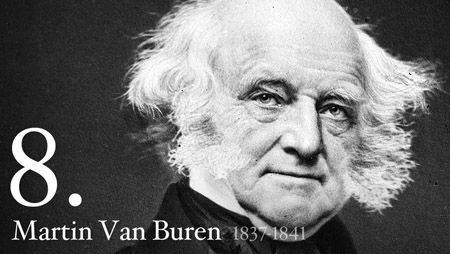
Martin Van Buren, the eighth President of the United States, served from March 4, 1837, to March 4, 1841. His presidency was marked by significant events, policies, and challenges that shaped the nation’s trajectory. This article delves into the timeline of his presidency, providing in-depth details on key dates and timeframes.
March 4, 1837: Inauguration
Martin Van Buren was inaugurated as the eighth President of the United States, succeeding Andrew Jackson. As Jackson’s Vice President and a key architect of the Democratic Party, Van Buren’s inauguration marked the continuation of Jacksonian policies. In his inaugural address, Van Buren emphasized the importance of democracy, limited government, and the Union’s preservation.
1837: The Panic of 1837
Shortly after Van Buren took office, the nation plunged into an economic crisis known as the Panic of 1837. Triggered by a series of financial missteps, including the Specie Circular (an executive order issued by Andrew Jackson requiring payment for government land to be in gold and silver), the panic led to widespread bank failures, business bankruptcies, and unemployment.
Spring 1837: Banks began to fail, unable to convert paper currency to hard specie (gold and silver). This crisis was exacerbated by the overextension of credit and speculative investments in land.
May 1837: The New York banks suspended specie payments, leading to a domino effect across the country. The economy entered a severe depression, which would persist throughout Van Buren’s presidency.
1837-1838: Van Buren’s Response to the Panic
Van Buren believed in limited government intervention and adhered to the principle of laissez-faire economics. His administration’s response to the Panic of 1837 focused on maintaining fiscal conservatism and avoiding measures that would expand federal power.
September 1837: Van Buren called a special session of Congress to address the economic crisis. He proposed the creation of an independent treasury system to separate government funds from private banks. This proposal faced significant opposition and would take several years to implement.
January 1838: The situation worsened as the depression deepened, with rising unemployment and declining prices. Van Buren resisted calls for federal intervention, believing that the economy would eventually correct itself.
1838: Trail of Tears
One of the most tragic events during Van Buren’s presidency was the forced removal of Native American tribes from their ancestral lands, known as the Trail of Tears. This policy had begun under Andrew Jackson, but Van Buren’s administration carried it out.
May 1838: The U.S. Army began the forced removal of the Cherokee Nation from Georgia to Indian Territory (present-day Oklahoma). Thousands of Cherokees suffered from exposure, disease, and starvation during the journey.
Winter 1838-1839: The harsh conditions of the Trail of Tears led to the death of approximately 4,000 Cherokee people. This event remains a dark chapter in American history.
1839: Independent Treasury Act
After persistent efforts, Van Buren finally succeeded in establishing the independent treasury system, a significant reform of the nation’s financial system.
July 4, 1840: The Independent Treasury Act was signed into law. This act created a system where government funds would be held in the Treasury and sub-treasuries, independent of private banks. The system aimed to stabilize the economy by reducing reliance on private banks and ensuring the safekeeping of government funds.
1840: The Campaign for Re-Election
As Van Buren’s term progressed, the economic depression and public dissatisfaction grew. The Whig Party capitalized on this discontent, nominating William Henry Harrison as their candidate for the 1840 presidential election.
Summer 1840: The Whigs ran a highly effective campaign, using slogans like “Tippecanoe and Tyler Too” and portraying Harrison as a man of the people, in contrast to the elite image of Van Buren. The campaign included mass rallies, parades, and slogans that resonated with the public.
November 1840: Van Buren was defeated in the presidential election by William Henry Harrison. Harrison won by a significant margin, reflecting the public’s desire for change amidst the ongoing economic hardships.
March 4, 1841: End of Presidency
Van Buren left office on March 4, 1841, having served a single term. His presidency was marked by economic turmoil and limited government intervention. Although he was unable to secure re-election, Van Buren’s efforts to establish an independent treasury system laid the groundwork for future financial stability.
Legacy
Martin Van Buren’s presidency is often viewed through the lens of the economic challenges that defined his time in office. His adherence to Jacksonian principles of limited government and fiscal conservatism shaped his policies and responses to the crises he faced. Despite the hardships, Van Buren’s commitment to the Democratic Party and his role in its formation cemented his place in American political history.
In retrospect, Van Buren’s presidency highlights the complexities of managing a nation’s economy during turbulent times and the impact of political ideologies on governance. His efforts to separate government finances from private banking were a significant achievement, even if his presidency is overshadowed by the economic difficulties of his era.